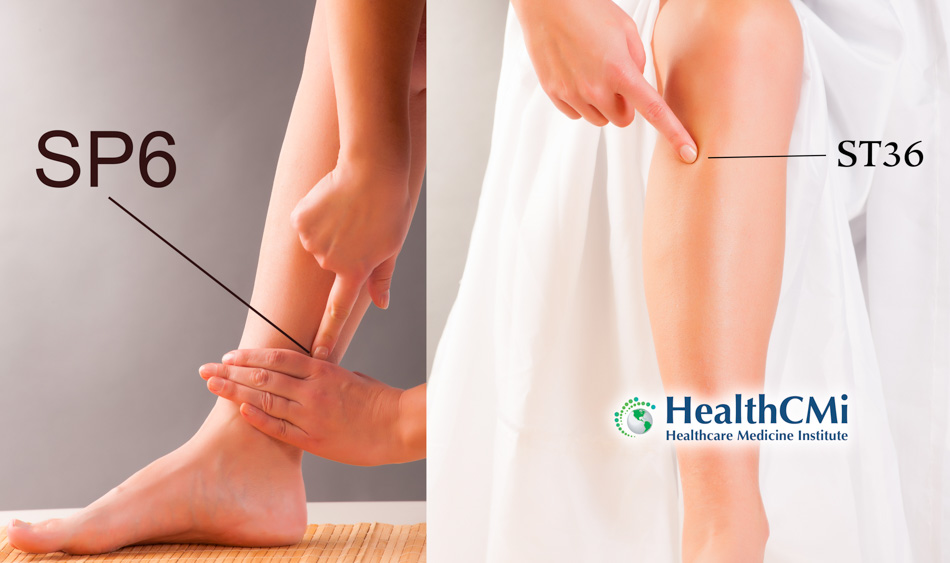
A systematic review and meta-analysis of fifteen randomized controlled trials involving 1,076 patients demonstrated that acupuncture is more effective than conventional medicine for the treatment of acute gouty arthritis (AGA) [1]. The investigators reported that electroacupuncture (EA) significantly improved overall clinical efficacy, reduced pain intensity, and lowered serum uric acid levels, while also producing fewer adverse reactions compared with pharmacologic therapy alone [1].
In terms of clinical outcomes, patients receiving EA showed a superior overall efficacy rate, with a risk ratio of 1.14 compared to standard drug therapy (95% CI: 1.10 to 1.19, P < 0.00001) [1]. Pain reduction was also more pronounced, as the mean difference in Visual Analogue Scale scores favored EA at −2.26 (95% CI: −2.71 to −1.81, P < 0.00001) [1]. Biochemical analysis revealed that serum uric acid levels were reduced by an average of 31.60 μmol/L compared with drug therapy (95% CI: −44.24 to −18.96, P < 0.00001) [1]. The study further emphasized that adverse events were not increased in EA groups and were often fewer than those reported in control groups [1].
The treatment strategies in the included trials consistently relied on the acupoints Sanyinjiao 三阴交 (SP6) and Zusanli 足三里 (ST36), with additional Ashi 阿是 points applied locally to the affected joint [1]. Sessions typically involved thirty minutes of needle retention with electrostimulation applied to the inserted needles [1]. Although the review did not provide uniform details on waveform parameters, stimulation frequency, or needle gauge, the addition of electrostimulation was the defining feature of the intervention [1]. In most included studies, treatment was administered daily or every other day during the acute flare period, though precise scheduling was heterogeneous across the trials [1].
The biomedical mechanisms underlying the observed outcomes have been investigated in complementary in vivo animal studies. Electroacupuncture has been shown to reduce nociceptive hypersensitivity and improve gait impairment in rodent models of gouty arthritis [2]. It further suppresses reactive oxygen species production in inflamed joint tissue while restoring antioxidant balance through markers such as glutathione and superoxide dismutase [2]. Histological studies demonstrate that EA down-regulates activation of the NLRP3 inflammasome complex, reducing the expression of NLRP3, Caspase-1, and ASC, and thereby lowering inflammatory cytokine levels, including IL-1β and IL-18 [2]. In dorsal root ganglion neurons, EA has also been shown to attenuate the overexpression and functional activation of TRPV1 channels, which are key mediators of inflammatory pain [2].
For licensed acupuncturists, the implications are clinically relevant. The consistent use of SP6 (Sanyinjiao 三阴交), ST36 (Zusanli 足三里), and Ashi (阿是) points, combined with electrostimulation and thirty-minute needle retention, provides a reproducible treatment strategy demonstrated to reduce both subjective pain levels and objective biochemical markers of disease activity [1]. Monitoring patient progress involves serial pain scoring, serum uric acid measurement, and assessment of joint swelling and erythema. [1].
The authors concluded that electroacupuncture is both safe and effective for AGA management, but emphasized the need for higher quality randomized controlled trials with clear methodological reporting and long-term follow-up [1]. These future investigations should address the lack of standardized protocols, as well as the scarcity of data on recurrence rates and long-term joint health outcomes. Nevertheless, the current synthesis of clinical trials, supported by mechanistic laboratory research, establishes electroacupuncture as a validated option for patients with acute gouty arthritis, offering measurable reductions in pain and uric acid while modulating inflammatory pathways [1][2].
In summary, electroacupuncture, whether used alone or alongside non-pharmacologic care, was found to be more effective than conventional drug therapy for acute gouty arthritis. Patients receiving electroacupuncture experienced greater pain relief, better reductions in uric acid levels, and overall stronger clinical improvement compared with those treated with Western medications alone. When electroacupuncture was combined with drug therapy, the immediate pain-relieving effect was also stronger than medication by itself.
Sources:
1. Ni, Z., Xiao, Q., Xia, Z., Kuang, K., Yin, B., & Peng, D. “Electroacupuncture for acute gouty arthritis: a systematic review and meta-analysis of randomized controlled trials.” Frontiers in Immunology 14 (2024): 1295154.
2. Zhang, X., Chen, J., Li, H., et al. “Electroacupuncture alleviates gout pain by suppressing ROS-mediated NLRP3 inflammasome activation and TRPV1 upregulation in rats.” Chinese Medicine 18 (2023): 80.